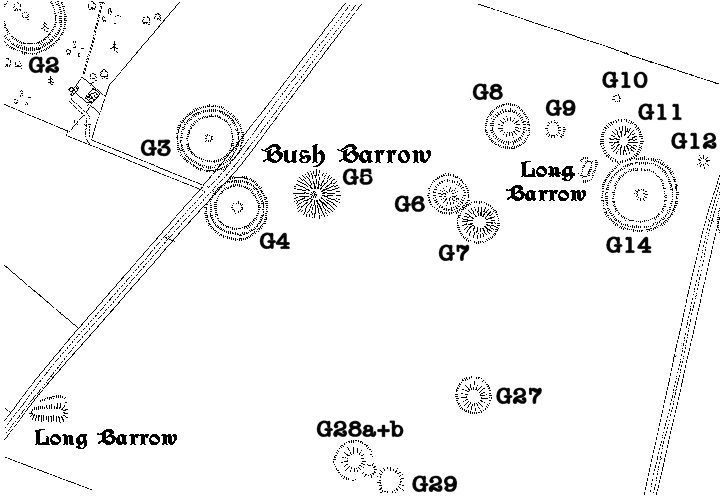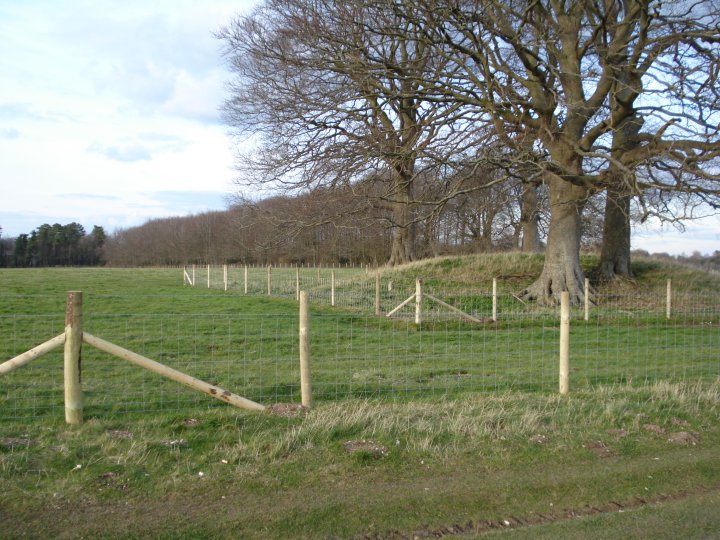Bell-barrow (Amesbury G43) and Twin bell-barrow (Amesbury G44).
Bell-barrow was opened by Lord Pembroke in the year 1722 with no record of contents
The Twin bell-barrow was open by Stukeley who found
In W mound: high in the mound a skeleton, head to N. This was opened again in 1803 by William Cunnington who found, south of centre, a large oblong chalk-cut pit in which was a cremation with 6 horn beads.
In E mound: Stukeley found a cremation (primary or secondary ?) in an urn, with a bronze knife-dagger, bronze awl, gold-mounted amber disc, and faience beads, amber studs, amber beads and space-plates, and beads of shale and ‘yellow glass’. He writes ‘This person was a heroin, for we found the head of her javelin in brass’.

















































